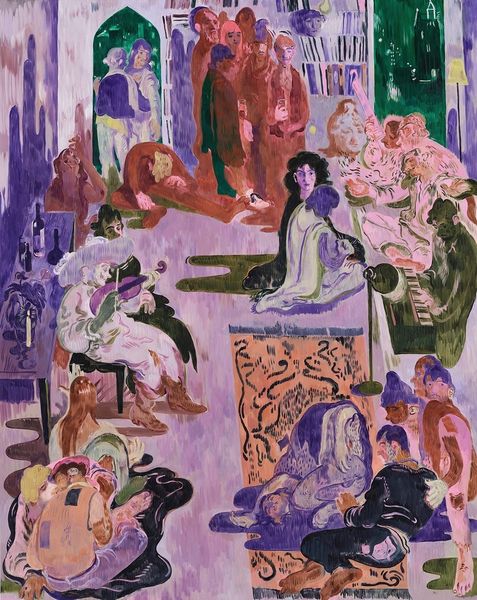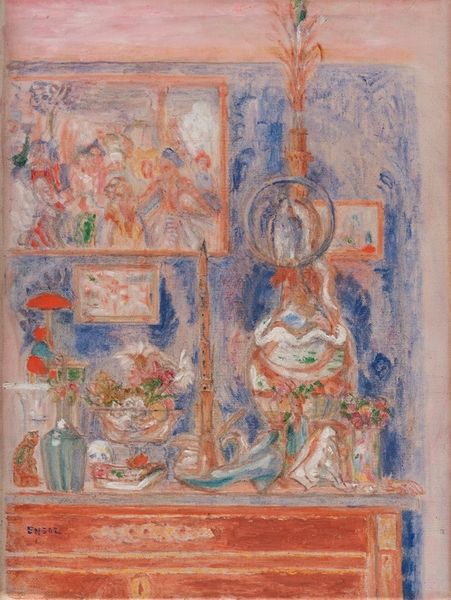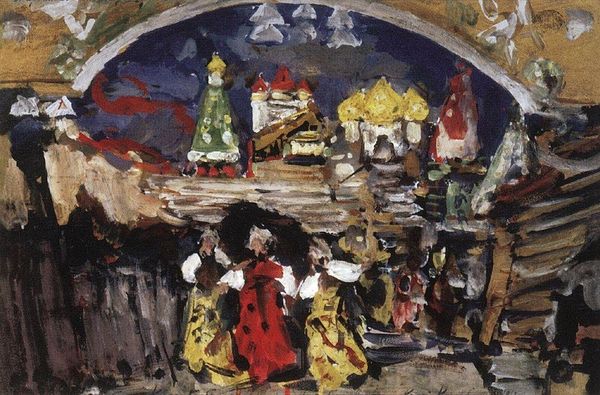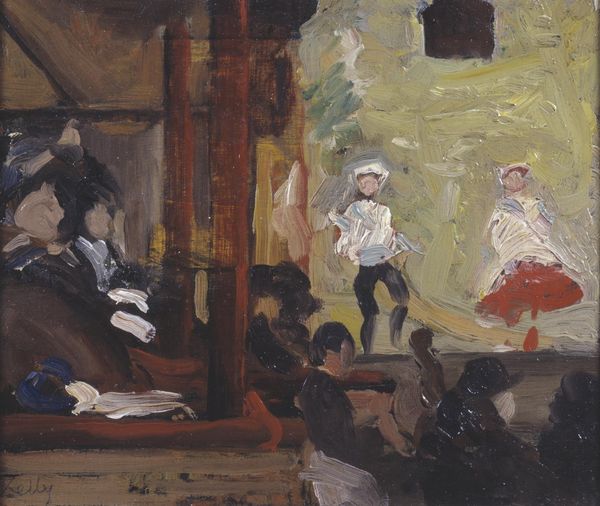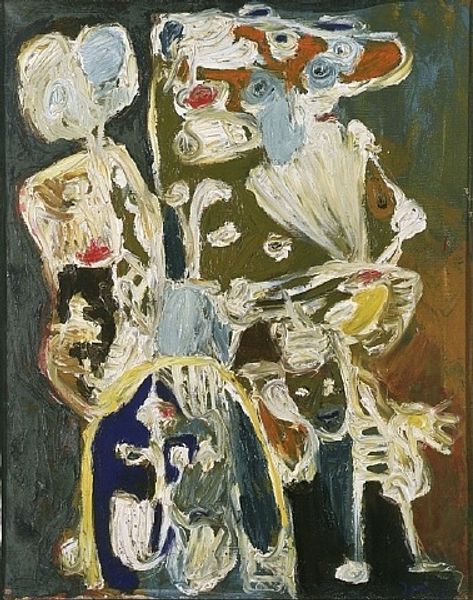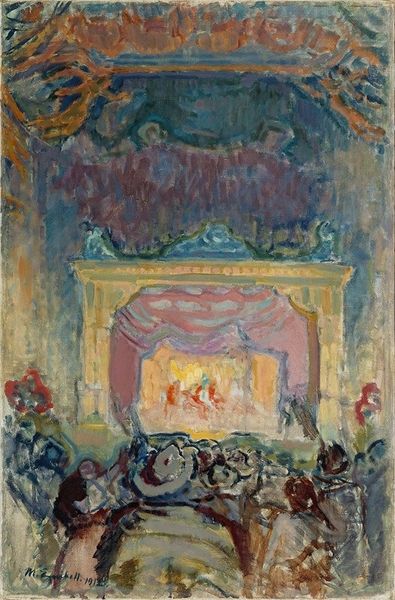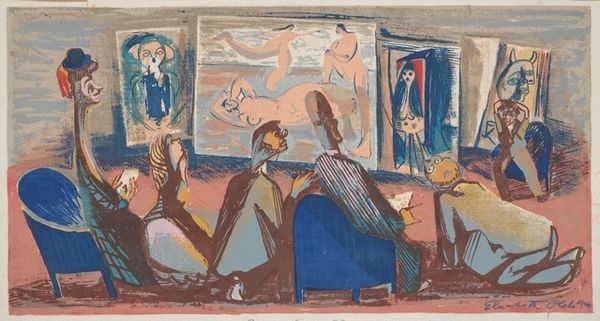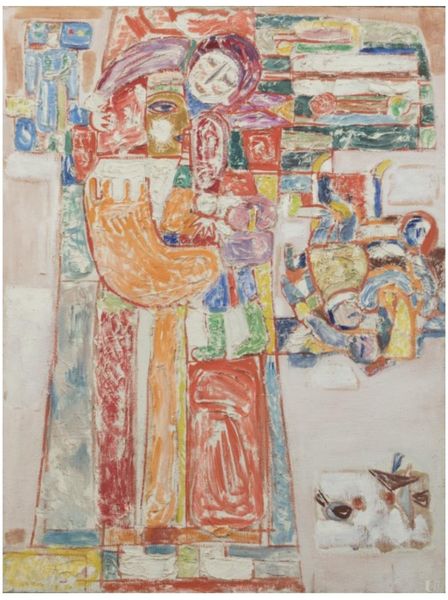
#
abstract painting
#
painted
#
possibly oil pastel
#
abstract
#
handmade artwork painting
#
oil painting
#
urban art
#
painting painterly
#
painting art
#
mixed media
#
watercolor
Copyright: Public Domain: Artvee
Curator: Looking at Walter Kurt Wiemken's "Cross Section of a House," made around 1931, the initial impression is… claustrophobic. The stacked scenes evoke an unsettling dollhouse. Editor: Exactly. It's crude yet undeniably evocative. I am struck by the sheer density of information crammed into a single space, each floor acting as a discrete stage set for a hidden drama. The materials, perhaps oil or pastel on what looks like coarse canvas, feel rough-hewn, almost deliberately unsophisticated. Curator: Well, that roughness contributes to its psychological impact, don't you think? Consider the visual language: the spectral figures, recurring skulls, wedding imagery juxtaposed with what seems to be a deathbed scene. These universal symbols explore themes of mortality, desire, and social ritual. There’s almost a Brechtian quality to how Wiemken stages these scenes. Editor: Perhaps, but I find it equally fascinating to consider the social context and Wiemken's process. Was this a planned piece, or an improvisational response to the available materials? The application of the medium isn't consistent throughout the picture and maybe hints at him returning to it across weeks, or even months. These are not casual decisions, the construction is an act of social commentary. Curator: I agree. The way he divides the canvas into these distinct zones, each presenting a different tableau, certainly suggests a commentary on the fragmented nature of modern life. Notice also how each “room” has a symbolic value – domesticity, faith, commerce. He’s dismantling the idea of the home as a sanctuary, exposing the anxieties within. Editor: I think there is a case for an understanding that there is a certain class satire going on as well. Just think about the clothing in the shop display on the bottom left, or the fancy garments shown worn by wedding members. Curator: Interesting! Seeing those as indications of socio-economic differences certainly enrich our appreciation. Wiemken appears to capture and contain a strange kind of continuity between his present day and our own. Editor: I would definitely return to see this, but hopefully without having too much of its uncanny dread sink in too deeply.
Comments
No comments
Be the first to comment and join the conversation on the ultimate creative platform.
